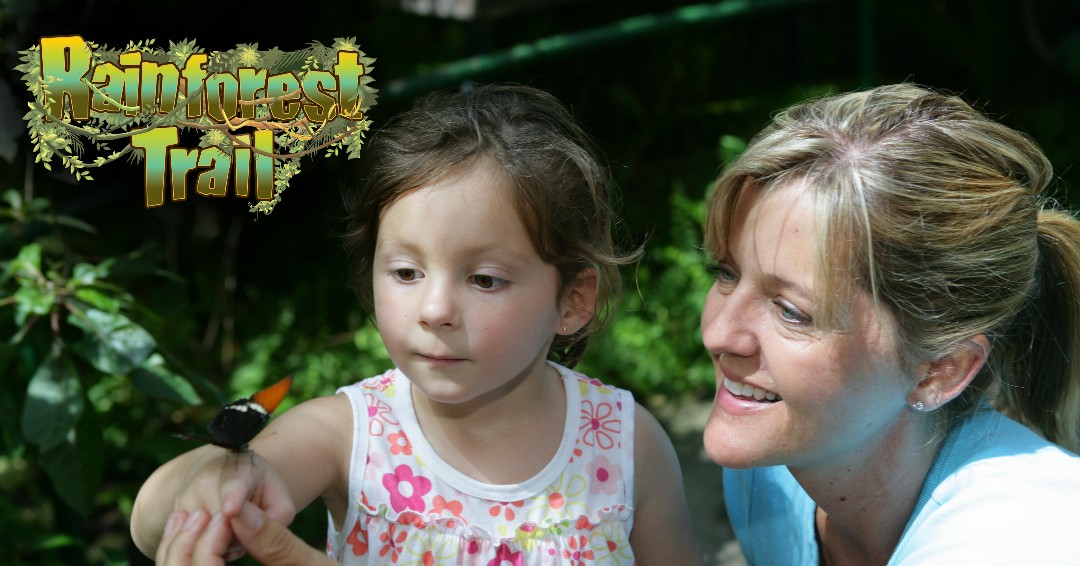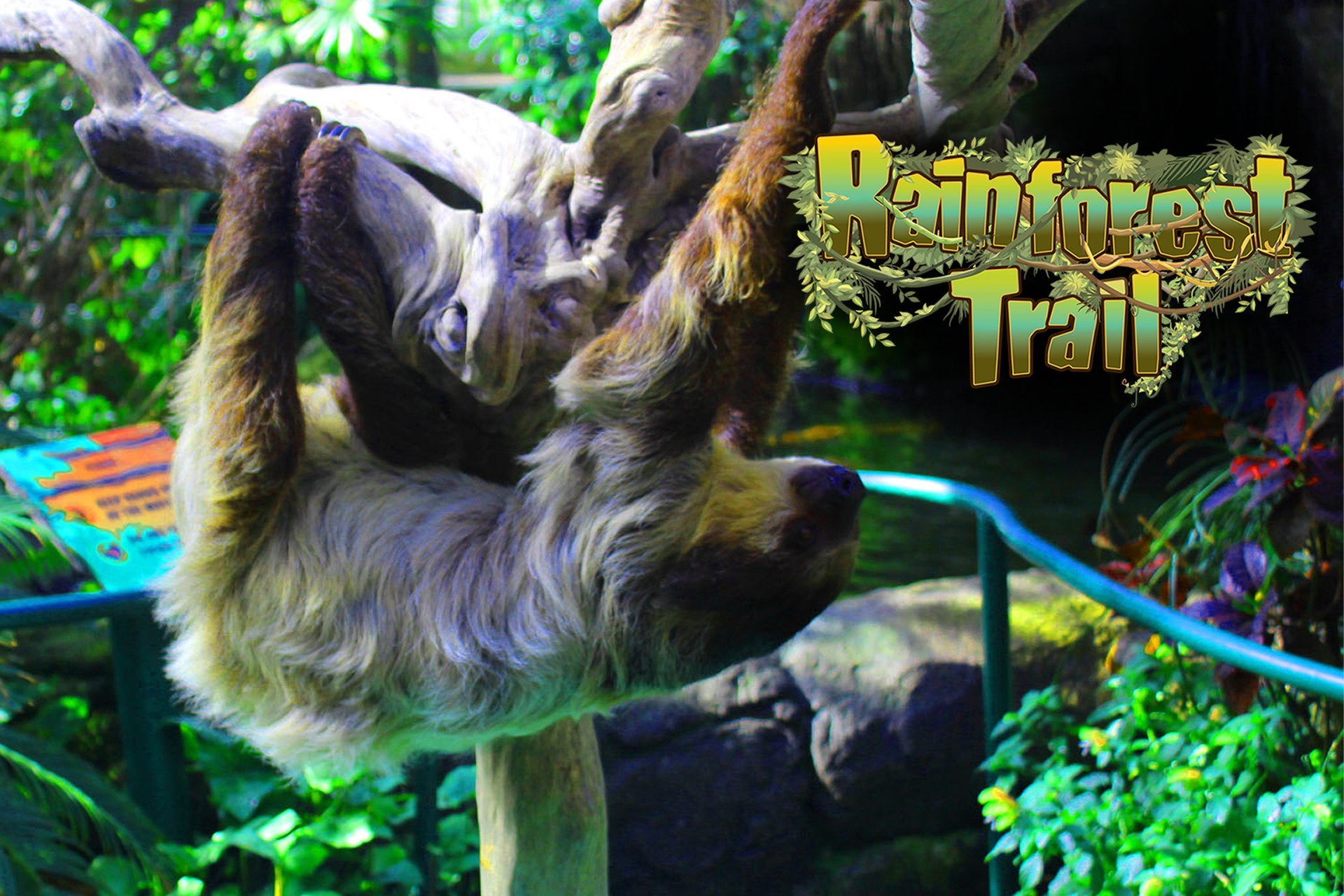Six Flags Discovery Kingdom Announces New Animal Exhibits for 2023
This morning SFDK announced two new animal experiences to be added to the park this spring: Rainforest Trail and an Enhanced Shark Experience.
Rainforest Trail

This trail is taking over the butterfly exhibit and seems to add Ginger the sloth from the animal nursery. Let's check out SFDK's description:
" OPENING LATER THIS SPRING Set amongst water features and plant life designed to represent the special ecosystem of a rainforest, The Rainforest Trail features over 500 free-flying butterflies from around the world, colorful fish, a sloth, and more. This new animal attraction leads a new wave of enhancements to the park's animal offerings in 2023.
This tropical paradise is filled with butterflies of various colors and sizes from all over the world. The 100-foot-by-50-foot glass atrium was originally the first major walk-through butterfly habitat in the western United States when it opened in 1988. Inside you'll find some 500 free-flying butterflies of up to 50 different species. This popular attraction has been named by many as their favorite place to visit when they come to the park!
There are about 15,000 to 20,000 known species of butterflies found worldwide and many yet to be discovered. At the park, you may find swallowtails and birdwings, brightly colored, or camouflaged among the plants. Some might be challenging to spot, as butterflies can be as small as 1/2 of an inch but can also be as large as 11 inches.
Butterflies are very colorful and can be yellow, orange, purple, white, black, and many other colors. Since they can see a wider range of colors including ultra-violet and infrared light, the world through their eyes is even more vibrant and colorful than it is to us humans. They also have tiny taste receptors on the tips of their feet.
The journey to becoming a butterfly is always an inspiring tale. There are four cycles of the butterfly's life. They start out as an egg, and then hatch into a larva called the caterpillar. They then become a pupa that is called a chrysalis, and finally emerge as an adult butterfly free to spread their wings and fly. In the Butterfly Habitat, there is a standalone display with pupa ready to hatch.
By visiting the Butterfly Habitat, we hope you'll gain a greater appreciation for butterflies and their place in the world's ecosystems. Before you leave though, remember to check your clothing for any hitchhikers! "
from the official page

Enhanced Shark Exhibit
And this seems to be just a refresh of the existing aquarium with new audio and interactive exhibits.
From the official page:
" OPENING LATER THIS SPRING Newly enhanced shark experience where guests will discover new state-of-the-art audio and visual enhancements and interactive education opportunities to compliment the existing walkthrough underwater tunnel and floor-to-ceiling viewing windows that have been wowing guests for over 30 years.
Surround yourself with sharks in this walk-through underwater tunnel!
The 300,000-gallon viewing gallery with floor-to-ceiling windows features a variety of shark species, including:
nurse shark sandbar shark Australian zebra shark spotted wobbegongs just a few of the over 380 known species of shark in the world. The sharks share the exhibit with other fish and stingrays.
At the Shark Experience, you'll enter through a dark entryway that leads to an illuminated, crystal-clear tunnel, where you find yourself surrounded by sharks as they navigate overhead and alongside you. You'll then make your way to the viewing gallery where you can observe the sharks and sometimes see our divers situated among them.
Though sharks are often viewed as fierce, aggressive creatures, they are seriously misunderstood. Despite their image, sharks are vulnerable, and many are harmless to humans. Sharks such as the sandbar shark, a classic-looking species found in the Atlantic Ocean and the Indo-Pacific regions are fairly large, with females as big as 150 lbs. But this species is slow to mature with a low reproductive rate, contributing to their vulnerability to threats such as commercial hunting and fishing.
Besides sport fishing and overfishing, the survival of shark species in general are threatened by finning, drift nets, which kill millions of sharks by accident each year, and pollution and commercial development which threaten water quality and the fragile near-shore nursery grounds that many sharks rely upon.
Sharks are also killed for their parts, such as shark eyes for cornea transplants, shark cartilage for burn treatments and biochemicals, shark liver oil found in lipstick and other cosmetics, and shark jaws and teeth for jewelry and tools, in addition to the shark meat and skin used for other products.
How You Can Help: Refuse to buy any shark products; consuming shark steaks or shark fin soup. Avoid preparations made from shark cartilage. Avoid “tag and release” fishing trips during which sharks are only caught and tagged. Sharks can die during such actions or may later be attacked by other sharks. Support organizations such as the Shark Foundation and Ocean Conservancy and others that actively protect shark species and their natural habitat. "
My Take
I applaud this change. It fits the MO of the new Six Flags regime of making small QoL changes throughout the park. And these two locations were among the oldest and least well kept up in the park, especially the shark exhibit. The backend of that exhibit features so many old and faded pictures. Adding in some new interactive exhibits will breathe some new life into a somewhat disappointing building.
I know that this change isn't going to be popular with the enthusiasts that want replacements for Harley Quinn, Voodoo, Skycoaster, Tazmanian Devil and Hammerhead (did I get them all?) that were removed in the last year or two but that will come. The park needs to spend a year or two investing in paint and refurbing the run down areas of the park. And this is a step in the right direction! I'll be there to cover these exhibits as they open!